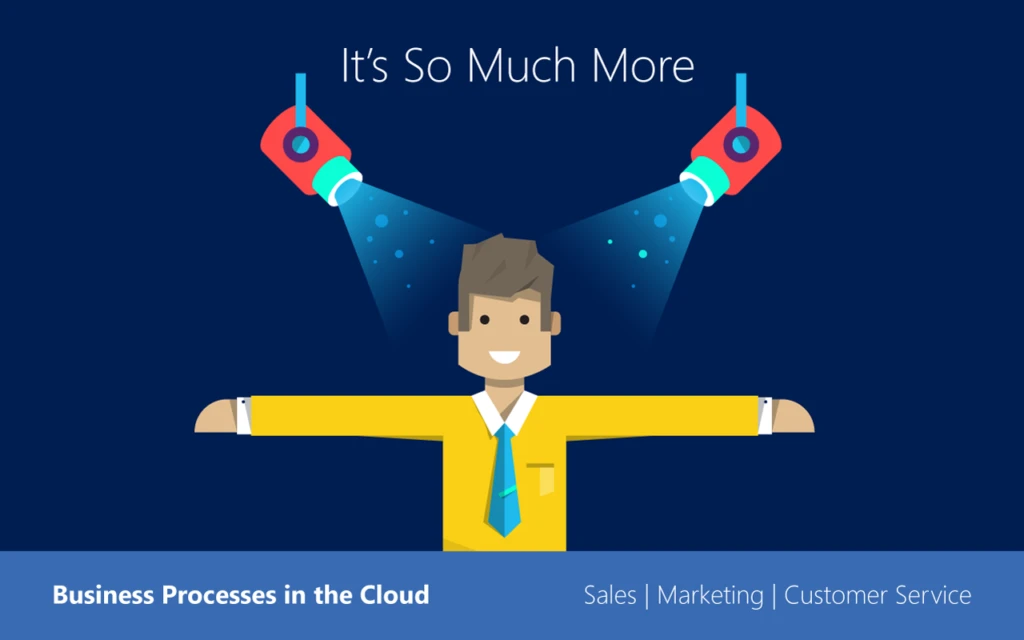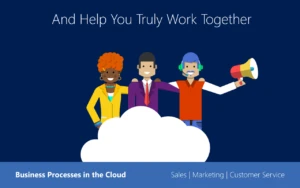
One View of the Customer Isn't What You Think It Is
We've said it before: companies trapped in their silos can't see what the customer is really doing. Companies that stay trapped fail.
There's a simple reason for this. In the new social economy, your customer is more connected than ever, has more insight about you and your competition and has more precise expectations of service.
The question is: Do you have the same kind of insights about them?
If the customer-facing people in your company don't share the same perspective as the customer, you probably don’t either. This means you can’t see the customer’s needs clearly, you can’t meet them and you can’t stop customers from leaving.
Get perspective
So how do you get these insights and solve these problems? You change your perspective. In other words, create One View of the Customer.
This is a term that’s gained popularity in recent years and it’s critical to every organization’s success. But what does it mean?
Well, it doesn't just mean making information available across departments. That's a start, but it's not enough.
One View of the Customer means:
- The people who need to understand your customer have the right information they need exactly when they need it.
- Marketing shares data with Customer Service, who shares data with Sales. Everyone shares data.
- You apply powerful analytics to your customer data in order to understand customer behavior and make those insights visible to everyone.
- You adopt strong social listening practices.
Register for the Webcast
All your knowledge, available to everyone
We covered this in detail in our previous post, but it’s worth revisiting: your silos are a problem. They create a fragmented point of view that we’re trying to avoid. Beyond that, they tend to isolate people from each other and prevent employees from pulling in valuable resources across departments.
Ted Kempf is a product marketing and strategy veteran who currently serves as the Director of Microsoft Dynamics Service Industries. He puts it this way:
“Employees often lack the tools to really find the best resources for engagement and might miss the chance to pull in a really strong colleague. Again we are talking about the brand promise here and some of the first direct interactions the firm might have with a client regarding a new opportunity. The technology exists today to remedy all this and more.”
Yammer is an example of such a technology; this intra-company collaboration, social network is designed to foster just that type of communication. A simple Yammer, shared across the company, could have located that colleague and created an opportunity for collaboration.
When you add in the danger of having different silos providing entirely different service levels or simply not having the same customer information, you see how silos kill the customer experience.
Solving this problem means making sure that when Customer Service learns from a service call, it’s entered into the shared CRM. When Marketing captures information from a gated content campaign, Sales and other departments can see it and potentially act on it. Sales pulls and adds customer information shared with everyone else.
Making knowledge about customers available in such an accessible way has another advantage in a customer-centric organization. By pulling information from across a range of formerly siloed sources, the company creates a new, previously unseen perspective. No single silo had such a clear view of the customer before; now the entire company does.
Data & analytics
Smart analytics are increasingly able to generate insights into customers’ habits, points of view and even future buying needs. However, to use analytics to their full potential, companies must change the way departments think about their roles and the fundamental way data is stored, handled and shared.
When data is walled off, it’s hard to make it visible. Keeping it in separate systems for different departments means that people who need it can’t get it – and neither can the analytical tools that help make sense out of it.
CapGemini Consulting’s Report “Cracking the Data Conundrum: How Successful Companies Make Big Data Operational” lays out the problem.
“Seventy-nine percent of organizations have not fully integrated their data sources across the organization. This means decision-makers lack a unified view of data, which prevents them from taking accurate and timely decisions.”
Data visibility is important to data-driven decision-making. Siloed data leads to time spent determining who has the best view of the data, whose data is most relevant or which data is the most accurate. With a unified view, that wrangling is eliminated because the same data is available to everyone.
When your data is walled off, so is the power of your analytics to generate relevant insights. However, when you use business intelligence to parse customer data from every available source, you return insights that show how best to serve your customer: and entire industries.
You have the opportunity to build a world-class sales organization.
Strongly social
To get to world-class levels, companies must truly become customer driven. That’s essential. You must listen hard to the actual customers, learning how they behave, what they buy and how they buy. Social media channels are rich with knowledge about your customer. The more you understand that, the better you will be able to tailor your offerings to your customer’s needs.
In addition to creating teams of skilled social media users, this means using a variety of tools to capture that data, process it and make it actionable. As Ted Kempf says:
“A CRM-based case management tool embedded in the client portal could be used to capture client questions and assign key service level agreements (SLAs) to the inquiry based upon the customer type and add workflow-based escalations if SLAs are missed. You could even enforce standard business processes for how questions are answered and use social media internally to find content and subject matter experts to help respond in a manner consistent with excellent customer service.”
By defragmenting silos, unifying data and analytics and developing strong social listening, savvy companies will be in a position to create One View of the Customer across the company and devote themselves to meeting the customer’s needs in a meaningful, unified, exceptional way. In other words, they can provide world class service and value that keep customers buying.
Read the social selling "Adding Value: A Guide to Improving Customer Engagement through Social Strategies" eBook to learn more about how to create one view of the customer, gain insight on your customer’s needs and provide greater value right now.
Learn More
Questions about Microsoft Dynamics Business Solutions? Call 1-888-477-7989


